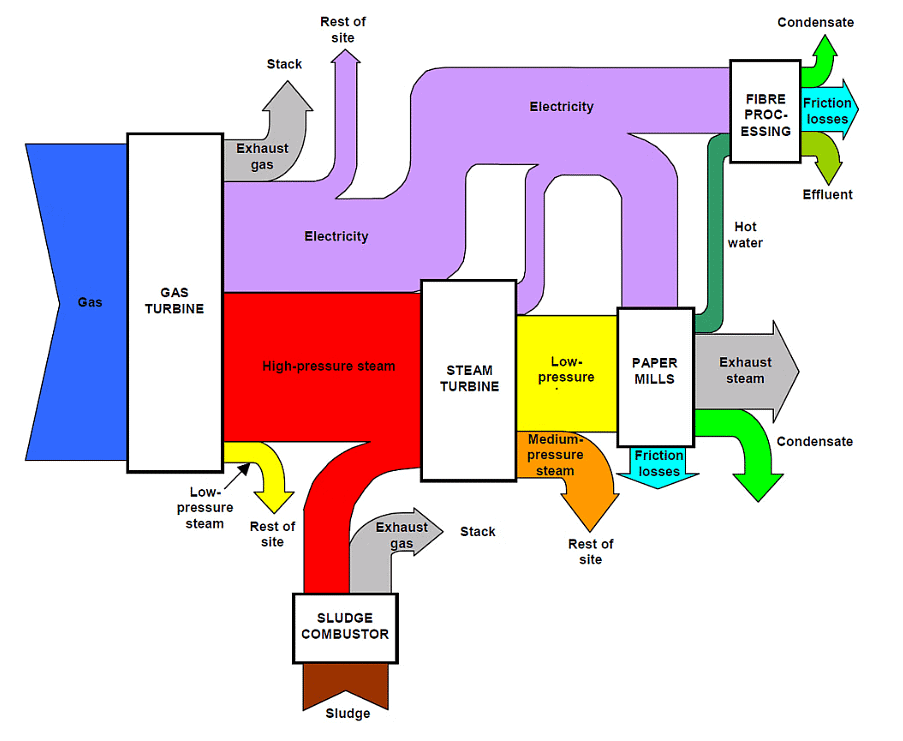Class 10 Exam > Class 10 Notes > Physics for GCSE/IGCSE > Efficiency
Efficiency | Physics for GCSE/IGCSE - Class 10 PDF Download
Efficiency of Energy Transfer
- Efficiency quantifies the proportion of useful power or energy output from a system relative to its total power or energy input.
- A high efficiency indicates that the majority of transferred energy is utilized effectively, while low efficiency implies that a significant portion of transferred energy is squandered.
- For instance, a typical thermal power station boasts an overall efficiency of approximately 30%, meaning that 70% of the energy transferred from the power station to the National Grid is lost as waste.
- In the generation of electricity:
- Energy is employed to heat water, leading to steam production.
- The steam drives a turbine, which subsequently powers a generator to produce electricity.
- Throughout each stage of this process, energy dissipates into the surroundings.
 Sankey Diagram
Sankey Diagram
Question for EfficiencyTry yourself: What does efficiency measure in the context of energy transfer?View Solution
Calculating Efficiency
- Efficiency, expressed as a percentage, can be computed utilizing the equation.

- The efficiency equation can also be expressed concerning power.

- Power is defined as the rate at which energy is transferred per unit of time.

The document Efficiency | Physics for GCSE/IGCSE - Class 10 is a part of the Class 10 Course Physics for GCSE/IGCSE.
All you need of Class 10 at this link: Class 10
|
126 videos|182 docs|35 tests
|
FAQs on Efficiency - Physics for GCSE/IGCSE - Class 10
| 1. What is energy transfer efficiency? |  |
Ans. Energy transfer efficiency is a measure of how much useful energy is transferred from one form to another, compared to the total energy input. It is calculated by dividing the useful energy output by the total energy input and multiplying by 100 to get a percentage.
| 2. How is energy transfer efficiency calculated? |  |
Ans. Energy transfer efficiency is calculated by dividing the useful energy output by the total energy input and multiplying by 100. The formula is Efficiency = (Useful energy output / Total energy input) x 100%.
| 3. What factors can affect the efficiency of energy transfer? |  |
Ans. Factors that can affect the efficiency of energy transfer include the design of the system, the temperature of the surroundings, the type of energy being transferred, and any energy losses due to friction, heat, or other inefficiencies in the system.
| 4. Why is it important to improve energy transfer efficiency? |  |
Ans. Improving energy transfer efficiency is important because it reduces waste and conserves resources. It can also lead to cost savings, as more of the input energy is converted into useful output energy, making processes more efficient and sustainable.
| 5. How can energy transfer efficiency be increased in everyday life? |  |
Ans. Energy transfer efficiency can be increased in everyday life by using energy-efficient appliances, insulating buildings to reduce heat loss, using renewable energy sources, and practicing energy conservation habits such as turning off lights and unplugging electronics when not in use.
Related Searches




















